The Jaeger-LeCoultre Reverso Chronographe Retrograde, The First In-House Integrated Chronograph Post-Quartz Crisis
An uber-chronograph that celebrates JLC’s rediscovery of high complications
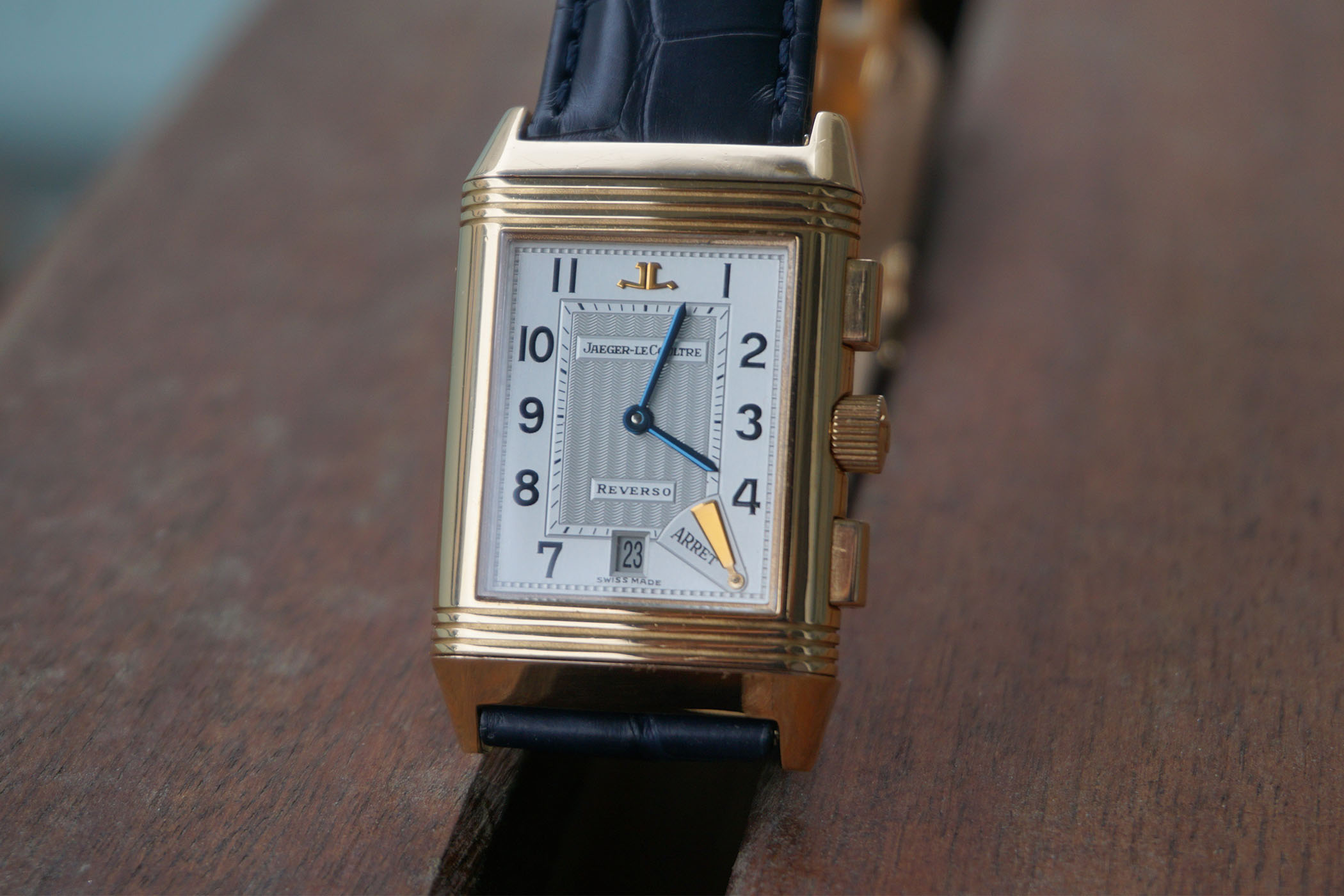
In our previous episode of the Collector’s Corner, we took a look at the Chopard L.U.C 16/1860 and its siblings that are part of the micro-rotor Calibre 96 family. From the realm of time-only, we move to complications again. The Jaeger-LeCoultre Reverso celebrated its 90th anniversary in 2021 with the stunning Nonantième, a celebration of the spirit of the Reverso and the possibilities afforded by a swivelling case. This article travels 30 years back to the early 1990s, to a landmark project that saw Jaeger-LeCoultre relearn Haute Horlogerie as the company developed six limited-edition watches in rose gold, each with a different complication, in the span of ten years. And, since we love our chronographs at MONOCHROME, we’re going to look at a particular watch in this special series, namely the Jaeger-LeCoultre Reverso Chronographe Retrograde.
A Brief History of the Jaeger-LeCoultre Reverso
We took our first look at the post-quartz crisis years at Jaeger-LeCoultre in our earlier The Collector’s Corner entry about the Master Control Perpetual. In 1978, VDO started building up its watch portfolio under the umbrella company “Les Manufactures Horlogères”, first acquiring IWC and Jaeger-LeCoultre (later adding A. Lange & Söhne to the mix) and in 1980, the visionary Günter Blümlein became the head of the two brands. After consolidating JLC’s shareholding structure and achieving a sale of 40% in the company to Audemars Piguet – at that time a customer of JLC ébauches – Blümlein set his sights on charting a path for the company. The Reverso caught his attention.
It is difficult to imagine a time when the Reverso was not a part of Jaeger-LeCoultre’s catalogue. The model range is synonymous with Jaeger-LeCoultre – it’s the company’s version of the Submariner, the Royal Oak, and the Speedmaster. The story has been told so many times, so I promise to keep it short. The concept of the Reverso was the brainchild of the successful businessman César de Trey, who first experienced the sport of polo – and the demise of the crystals on watches worn by said polo players – during his travels on the Indian subcontinent in 1930.
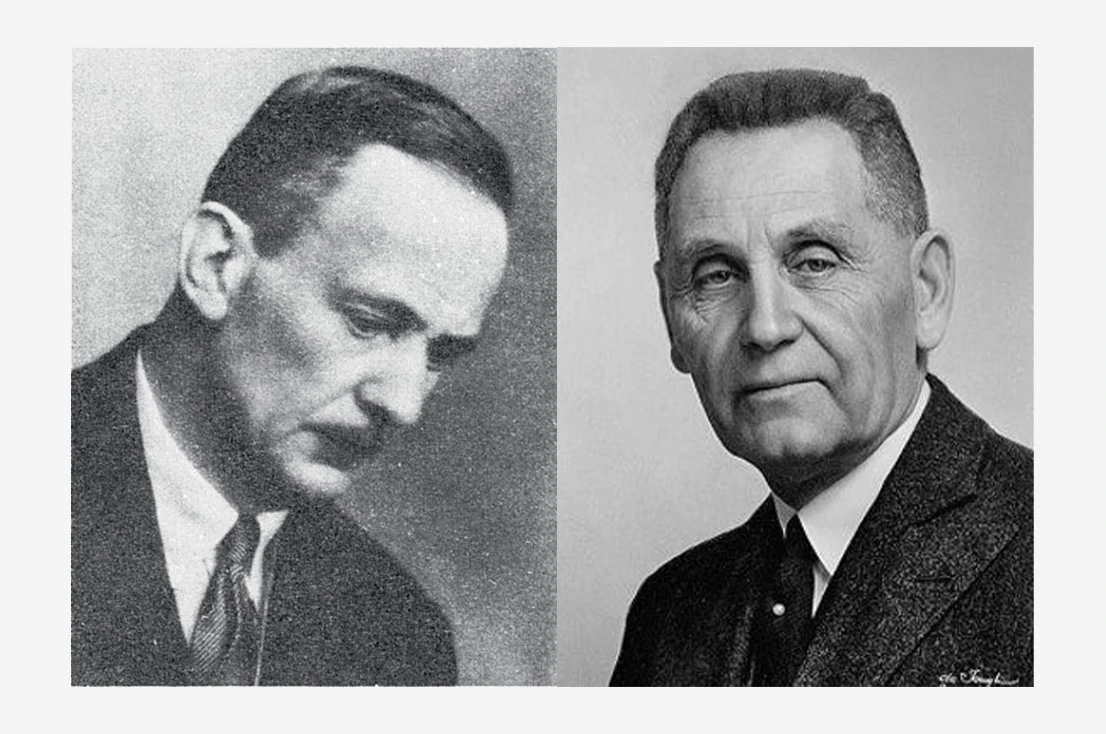
The concept of activewear was still in its infancy, and a little prodding from his British friends was all it took to set de Trey on the journey to see whether a watch case could be designed to withstand the rigours of the sport. Less than one year later, the Paris patent office received the application for “a watch capable of sliding in its support and being completely turned over.” The Reverso, Latin for “I turn,” was born.
The Reverso was an icon of the Art Deco era – the square case shape from the patent application was instead lengthened and accentuated with triple godrons both top and bottom. The watch was a symbol of modernity, a break from the elaborately ornamental style of the past. It is curious how round watches are the most popular by a wide margin today. In the 1920s and 1930s, as the wristwatch became more widely accepted, non-round watches were a sign of a watch that was conceived specifically as a wristwatch and was not merely a converted pocket watch. Suffice to say, the Reverso became an instant success for Jaeger-LeCoultre.
The harsh realities of a world reeling from a Second World War in less than three decades meant that interest waned in the Art Deco movement and the exuberance and carefree optimism it embodied. This was the age of exploration, the age of science, and, incidentally, the age of the purpose-built tool watch. The Reverso went into a period of dormancy for nearly three decades until a revival of interest in Art Deco in the late 1960s set the Reverso on the trajectory on which it continues today. In 1972, JLC’s Italian representative Giorgio Corvo, made an enquiry about whether any Reversos were in stock. There were none, but JLC did find 200 Reverso cases – the company fitted an oval movement into the empty cases, and within a month, all 200 Reversos had been sold. Stunned by the success, Jaeger-LeCoultre relaunched the Reverso in 1975, fitted with the newly designed calibre 846.
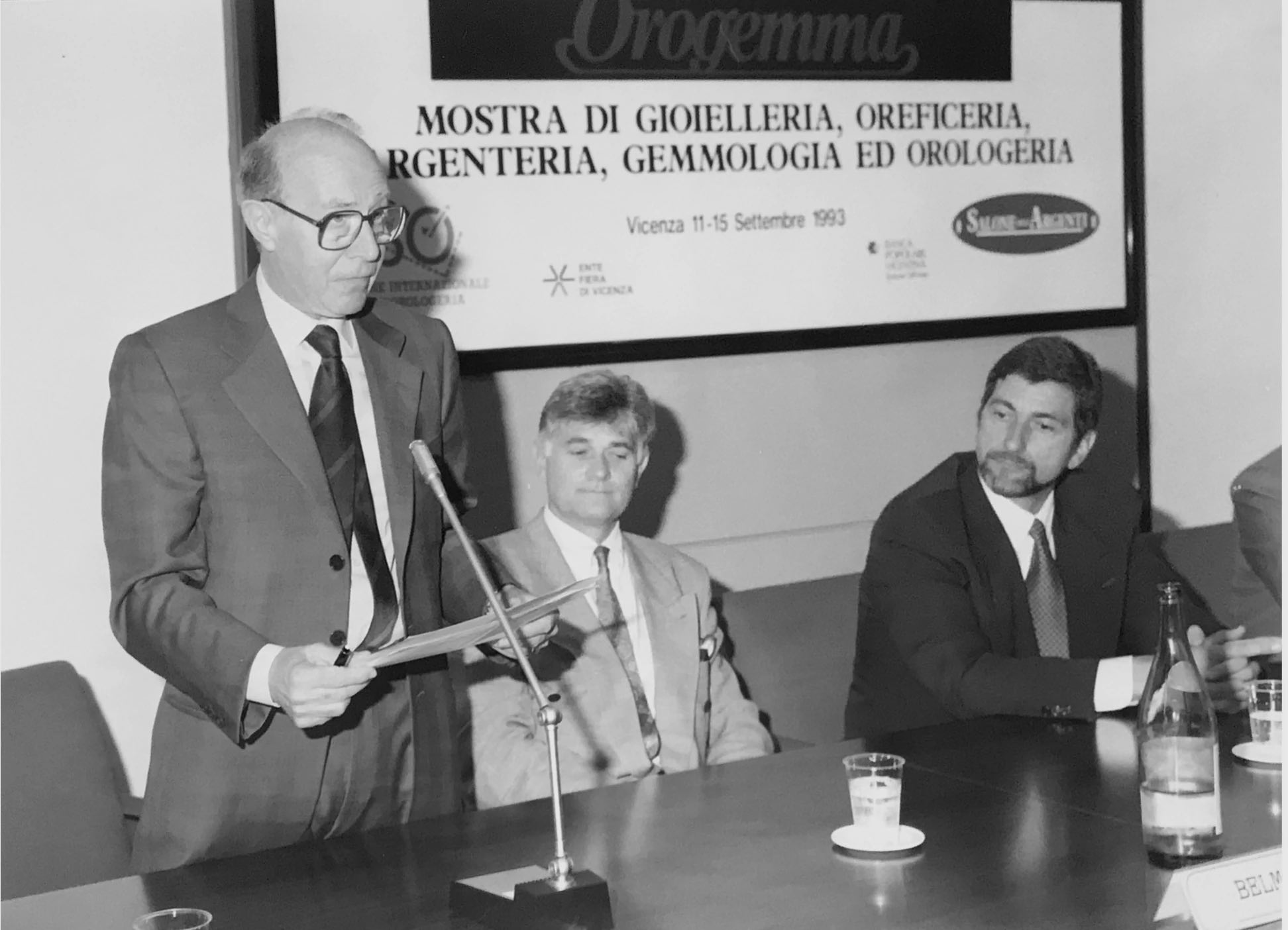
The new Reverso, however, needed a new case for the new era. The standards for water resistance that were acceptable at the time of the Reverso’s launch in 1931 would no longer fly five decades later. The widespread popularity of dive watches had changed expectations of watches’ capability, and the Reverso too would have to receive an update. The monumental task of completely reengineering the case while making as few aesthetic changes as possible fell to Daniel Wild, one of the manufacture’s engineers, who turned to new CNC machining technology to improve the tolerances of the design and robustness of the case. In 1985, the updated Reverso went on sale and was a triumph, proving the Reverso’s staying power even 54 years after its release.

Jumping forward six years, Jaeger-LeCoultre celebrated its storied icon with the Soixantième (the model you can see below), a 60th-anniversary model limited to 500 pieces. The Soixantième was a game changer and marked many firsts: it was the first Reverso to be released in the Grande Taille case, the first Reverso with a display caseback, the first Reverso with a solid gold movement, and the first serially produced Reverso to display more complications than just the time and seconds. The Soixantième kicked off an ambitious R&D project at JLC to release six complicated Reverso models in 10 years and prove that the company had mastered these complications. The importance of these watches cannot be exaggerated, as they lay the foundation for our understanding of the Reverso not as a single watch, but as a collection that can encompass everything from a simple time-only watch to a grand complication.
The six special-edition Reverso models are listed below in chronological order, with their respective calibres and engineers, and complications:
- 1991: Soixantième, calibre 824 (Daniel Wild), power reserve, pointer date, small seconds
- 1993: Tourbillon, calibre 828 (Sylvain Golay), caseback power reserve, tourbillon escapement, small seconds
- 1994: Répetition Minutes, calibre 943 (Eric Coudray), minute repeater
- 1996: Chronographe Rétrograde, calibre 829 (Manuel Guerin), retrograde 30 minutes chronograph, date, stop-start indicator
- 1998: Géographique, calibre 858 (Philippe Vandel), dual-time indication, day-night indicator, small seconds
- 2000: Quantième Perpétuel, calibre 855 (Rachel Torresani), perpetual calendar with retrograde date, day-night indicator, small seconds
The 1996 Reverso Chronographe Retrograde, The basics
Allow me to digress for a minute and talk about Jaeger-LeCoultre’s sister company A. Lange & Söhne. One of Günter Blümlein’s most lauded achievements was his involvement in the resurrection of the storied German brand, together with the Lange family, in 1993. A mere five years later, the first-generation Lange Datograph was released. The Datograph, and the movement powering it – the in-house L951.1 – undeniably changed the face of watchmaking. Established haute horlogerie brands were faced with the prospect that they could no longer rely on the traditional model of sourcing a chronograph ébauche and regulating and finishing it to their exacting standards. They would have to rise to the challenge set by the German upstart and develop their own in-house chronograph movement. Work on the L951.1 started in 1995, as denoted by the first two numerals of the calibre. That makes it the first integrated chronograph calibre developed from the ground up after the quartz crisis. Right?
What if I told you there was another movement that beat the L951.1 to the punch? A movement whose development started the same year as the founding of A. Lange & Söhne? A movement that was perfected over the course of three years in time for the Basel exhibition in 1996? Enter the Jaeger-LeCoultre Calibre 829.
In my opinion, the calibre 829 chronograph is one of the most under-appreciated movements in the history of the chronograph, not just in the context of 1990s watchmaking. To my knowledge, this is the first greenfield chronograph calibre effort post-quartz crisis, with work having started towards the end of 1992.
Let us get the technical specs out of the way: the actual canister of the Chronographe Rétrograde case (the part which swivels) measures 8.5mm thick, 30.5mm in length, and 26mm in width. Within the tight confines of this case, the engineers packed in a high-spec movement: a smoothy Glucydur balance wheel beating at 28,800vph, 37 jewels (versions with 36 jewels or even 35 jewels are also known to exist. It could be that one of the jewels of the earlier 829 was merely decorative and was subsequently removed), retrograde scrolling 30-minutes counter, a quickset date, and a chronograph running indicator on the primary dial. The calibre 829 measures 4.5mm high and consists of 317 parts, all in a case designed to house no more than 200. Despite the power-hungry retrograde, the movement managed 44 hours of power reserve. The first-gen Datograph, on the other hand, had a power reserve of 36 hours, even though it beat at a lower frequency (18,000vph) than the Chronographe Rétrograde. Take that, Lange! (ps. I love the Datograph, no drama here…)
What I find most amazing about the movement is the engineering ingenuity behind the operation of the retrograding minutes. The minutes wheel lies at roughly 1 o’clock on the movement side, the opposite end of the movement from the minutes indicator at 6 o’clock, some 1.5 centimetres away. The levers of the chronograph mechanism span the entire movement and have to snake past the balance wheel, in order to transmit the movement of the chronograph wheel to the minutes counter.
A lever with a beak rests on a snail cam that is placed directly under the chronograph minutes counter. As the chronograph minutes elapse, the snail cam turns, and the beak rides up the increasing radius of the snail cam. When 30 minutes have elapsed, the snail cam has made a full rotation and the beak rumps down from the snail cam’s widest point to its narrowest. This sudden motion triggers the return of the minutes hand to zero in less than 1/8 of a second, facilitated by a coiled spring. For a technical look at the inner workings of the retrograde, I direct your attention to user “thr” fantastic technical article “Reverso Gran’Sport Chronograph Retrograde – a deeper look at the retrograde mechanism” on WatchProSite.
Turning to the case (pun not intended!), the Grande Taille size of the Chronographe Rétrograde measures a compact 42mm lug to lug and 26mm in width (not including the pushers). The watch measures only 9.5mm thick – a staggering feat! As with the other anniversary watches, the watch is made of rose gold, with the 18k hallmark and maker’s mark stamped on the inner chassis of the case, which is neatly perlaged. The case is entirely polished, but due to its relatively small size, the watch does not look or feel garish. On the crown side, the two rectangular pushers are also fully polished and lie in the same plane as the crown – this is an integrated chronograph, after all! Due to the presence of the chronograph pushers, the crown had to be enlarged to ease winding and setting and is more prominent compared to that of the other anniversary models.
The primary dial of the Chronographe Rétrograde belies the complexity inside. The dial is a solid silver blank that is galvanized silver and stamped with a wave guilloche pattern in the central portion. A date aperture neatly stepped down from the main dial, is tucked away at six. The time is easily read thanks to the large vertically-arrayed Arabic numerals for the hours and hash marks for the minutes. The classical dial is complemented by blued steel sword hands for both hours and minutes. There are two subtle indications on the dial that give the game away that this is a rather special watch. The first is the solid gold “JL” logo on the dial – a trademark of the anniversary series (apart from the Géographique, which has a day-night indicator at 12). The second giveaway is the trapezoidal indicator on the dial that looks a bit like a mailbox flag. When the chronograph is not in operation, the indicator is in its vertical position and reveals the word Arret, or “stop”, in black print. Start the chronograph, and the indicator swivels 90° counterclockwise to cover Arret and in doing so, reveals the word Marche, or “run”, in blue ink. It’s a fanciful touch for sure but also lets the user know if it is safe to use the chronograph reset pusher.
Turn the case over, and you unveil the magic of the calibre 829 in all its glory. Both chronograph indications are shown on two silvered registers that are recessed into the movement bridges, with the tracks affixed with blued screws (I do wonder if the first watches manufactured by F.P. Journe were an inspiration for the design of this movement). The movement is well finished, with brushed steel components, blued screws, and anglage on the gilded bridges, but the true beauty lies in the range of colours on display – silver, blue, gold, and red from the bearing jewels.
Why you should consider the Reverso Chronographe Retrograde?
I remember seeing pictures of the Reverso Chronographe Rétrograde three years ago, when I discovered my love for form watches and for the Reverso in particular. Saying I was wowed would be an understatement – everything about the watch amazed me, from its clean dial-side aesthetic to its incredible skeletonized caseback. Also, I am a bit of a sucker for shaped watches… and for chronographs… so I guess this one was bound to catch my attention at some point!
It is rumoured that the Chronographe Rétrograde was a challenge to sell and that the limited run of 500 pieces took a number of years to be fully allocated. What should have been a talking point and a head-turner failed to generate momentum and quietly slipped out of the public consciousness. The chronograph was re-released in the Gran’Sport line in 1998, a more democratic take on steel. Housed in a slightly more masculine, barrel-shaped case, the Gran’Sport was the consummate sports watch, with rubber or steel integrated bracelets and, despite the complications housed inside, 50 meters of water resistance. Apart from the different bridge finish of the calibre 859 in the Gran’Sport iteration (rhodium-plated versus gilded in calibre 829), the primary difference is that the 859 does away with the skeletonized dial and features a more conventional and, dare I say it, legible subsidiary dial. Also, the sporty Gran’Sport iteration gained a centre seconds hand for the primary time display.
The chronograph version was produced in three variants: 295.81.20 (steel, silver dial), 295.81.02 (steel with black dial), and the flagship luxe 295.1.59 (yellow gold with silver dial). The Gran’Sport was discontinued after eight years and even in the Gran’Sport guise, the Chronographe Rétrograde model likely remained a low-volume piece and was very expensive, with an MSRP in 2006 ranging from USD 15k for steel on bracelet to over 30k for gold on its corresponding bracelet.
Writes Nicholas Foulkes in his amazing reference book “Reverso” from 2021, “The Reverso Répétition Minutes may have been the most challenging of the six, but in the eyes of the author and indeed many others, the most elegantly realized and beautifully executed is the Reverso Chronographe Rétrograde”. Technical wizardry in watches impresses me as much as a beautifully finished movement. What you have in the Chronographe Rétrograde is an in-house, integrated shaped, double-faced chronograph. In fact, the only other dual-faced chronograph I can think of is a rarely-seen 1939 reference from Movado that did not enter serial production. The execution of the chronograph on two faces of the Reverso is so clean, so pure, and intuitive, it is surprising that it was not attempted earlier.
Pricing for both iterations is fair by today’s market standards. I would go so far as to say that the Gran’Sport version of the Chronographe Rétrograde is fairly priced considering what is inside. Expect to pay between EUR 6k and EUR 10k for a Gran’Sport in steel and between EUR 15k and 18k for an example in yellow gold with a full gold bracelet. The Chronographe Rétrograde is a coveted piece and rarely comes up for sale, but expect to pay upwards of EUR 15k for it. As with the other five anniversary Reversos, the Chronographe was produced in 500 pieces, all individually numbered. Twenty prototypes were built in addition – the first had two circular subdials on the back. An additional “zero series” of twenty were manufactured as press pieces for exhibitions and trade fairs around the world.
As far as chronographs by major brands go, this one is a rare bird and is a terrific chance to stand out from the crowd. If you’re into shaped watches, if you are a technical-minded collector who appreciates mechanical innovation and engineering ingenuity – you owe it to yourself to check this one out!


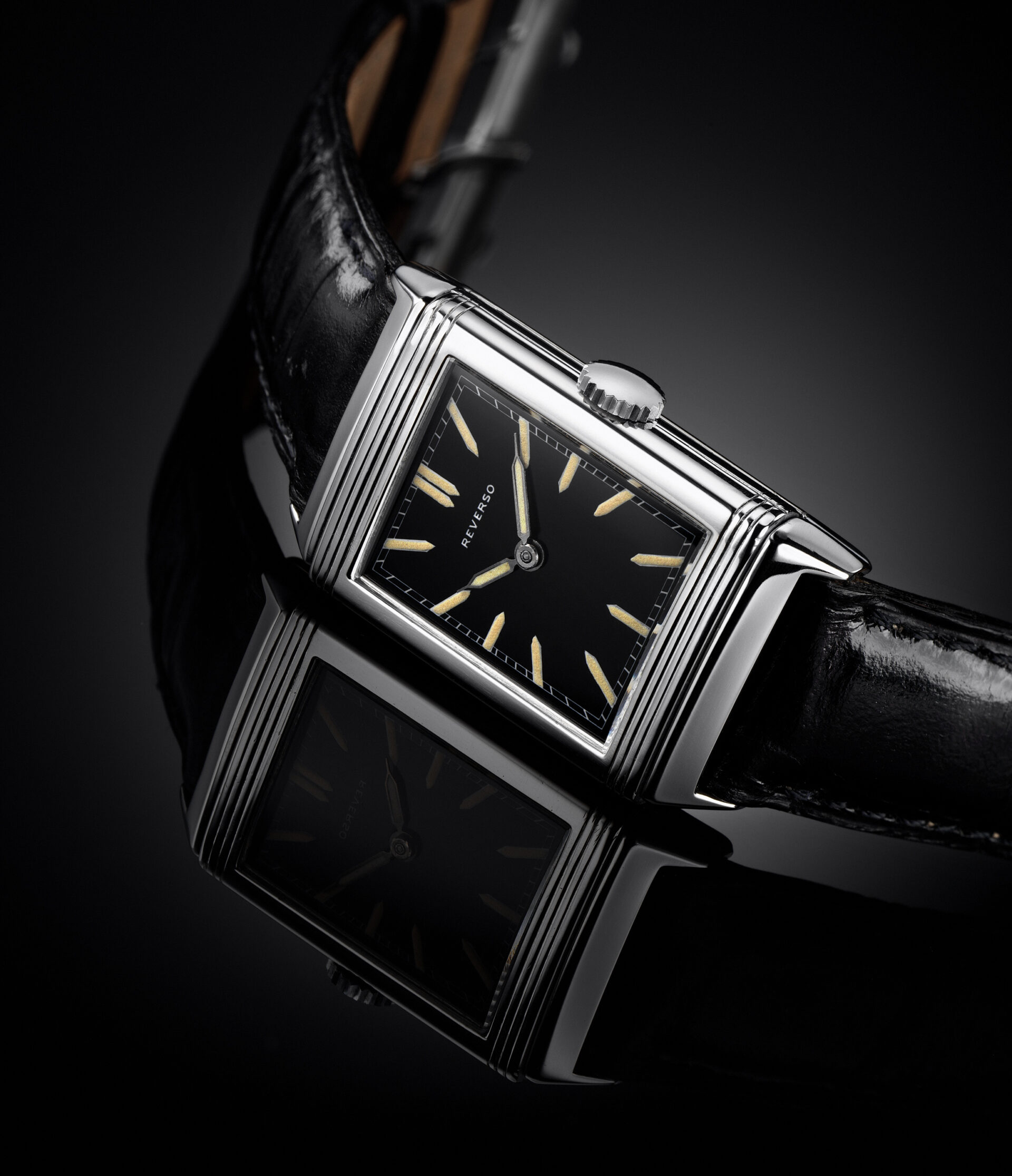
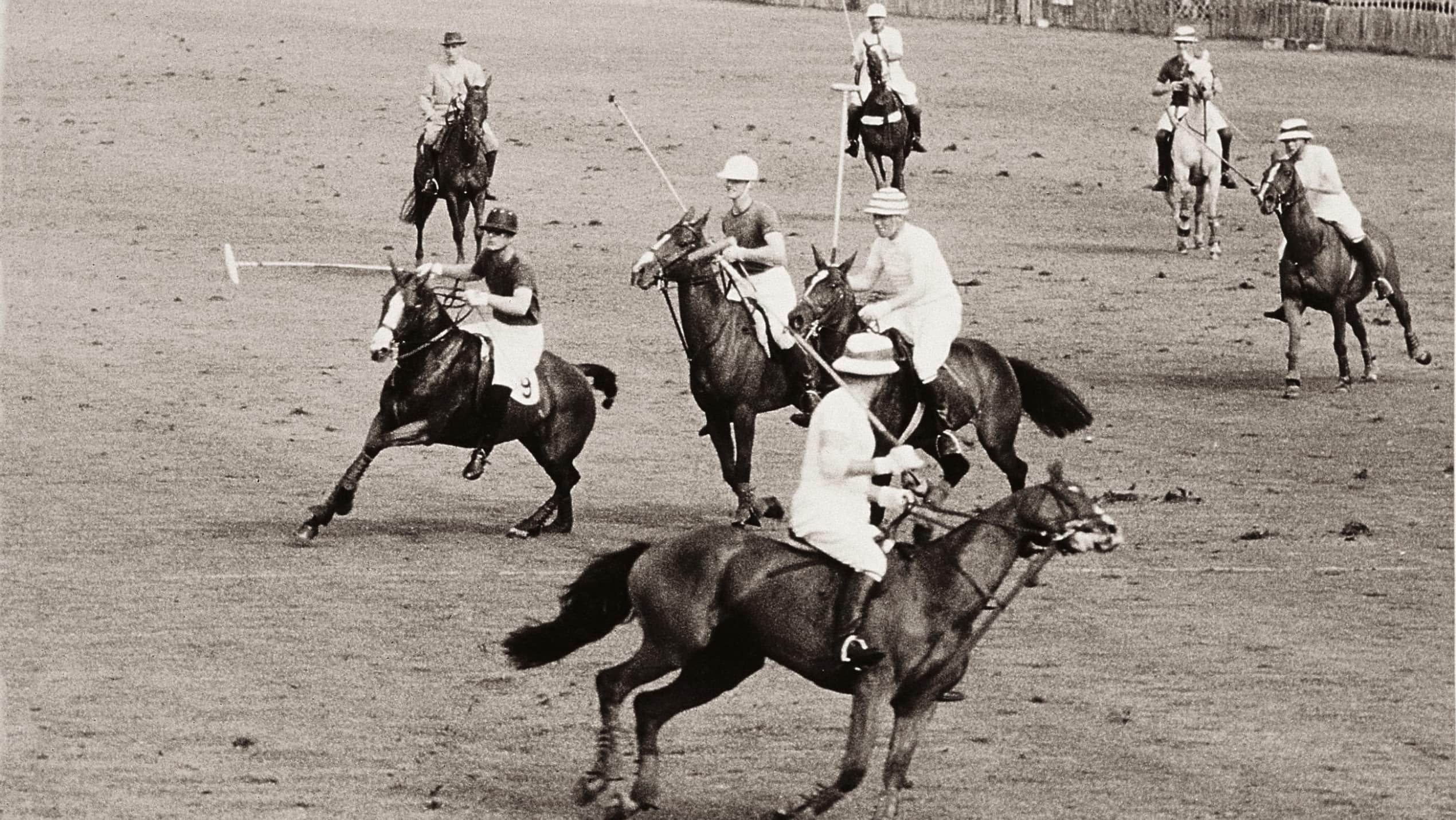
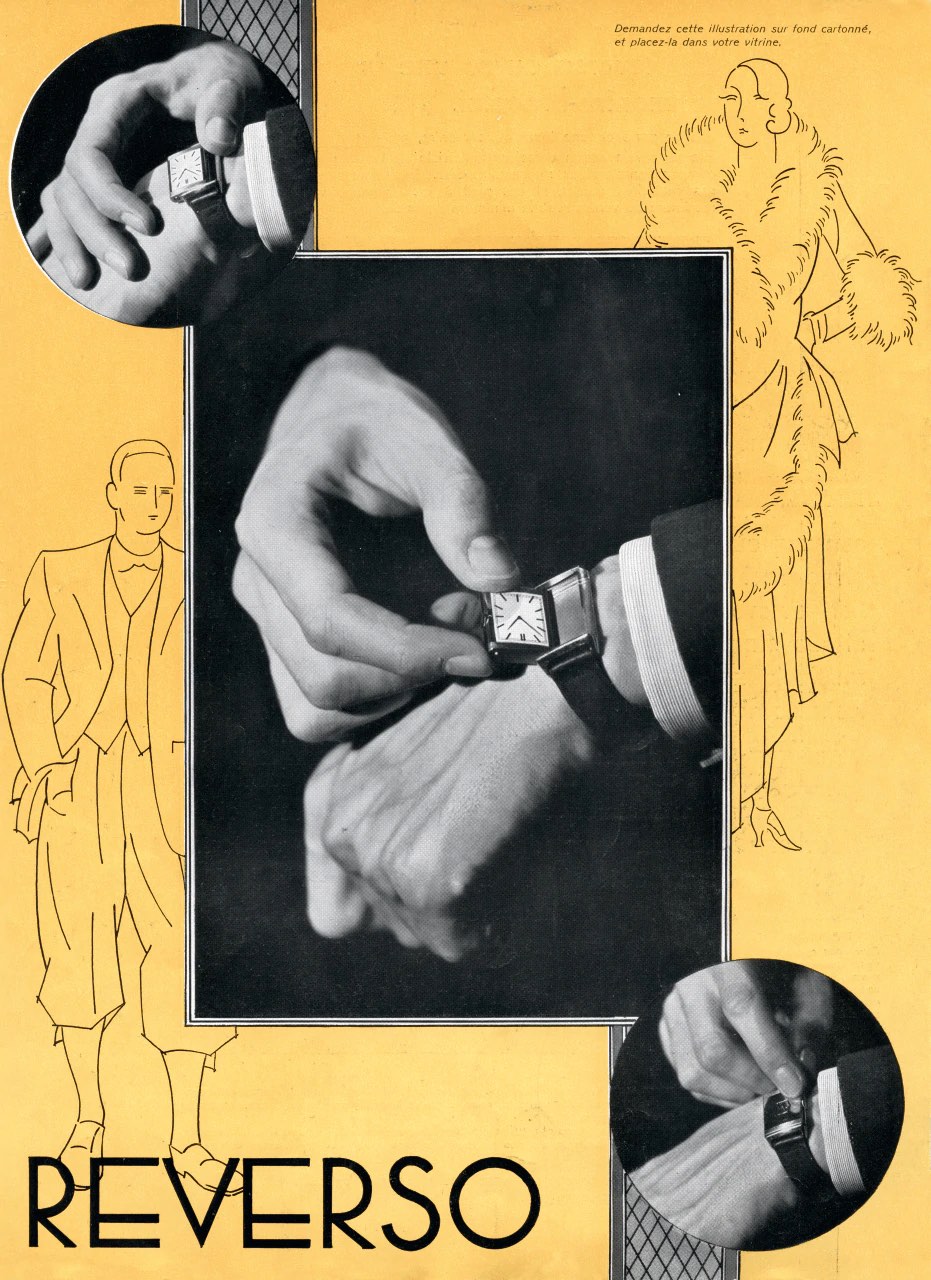
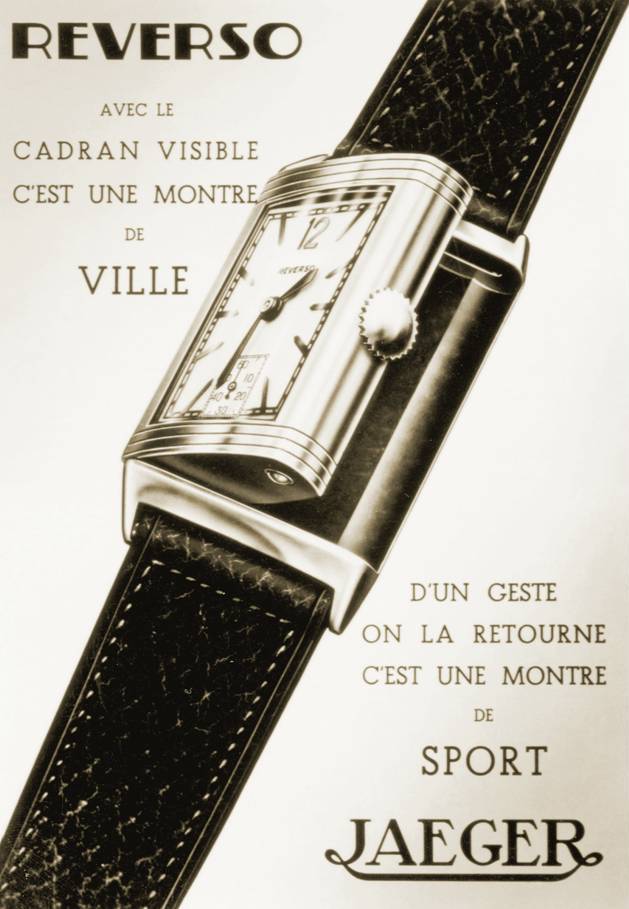
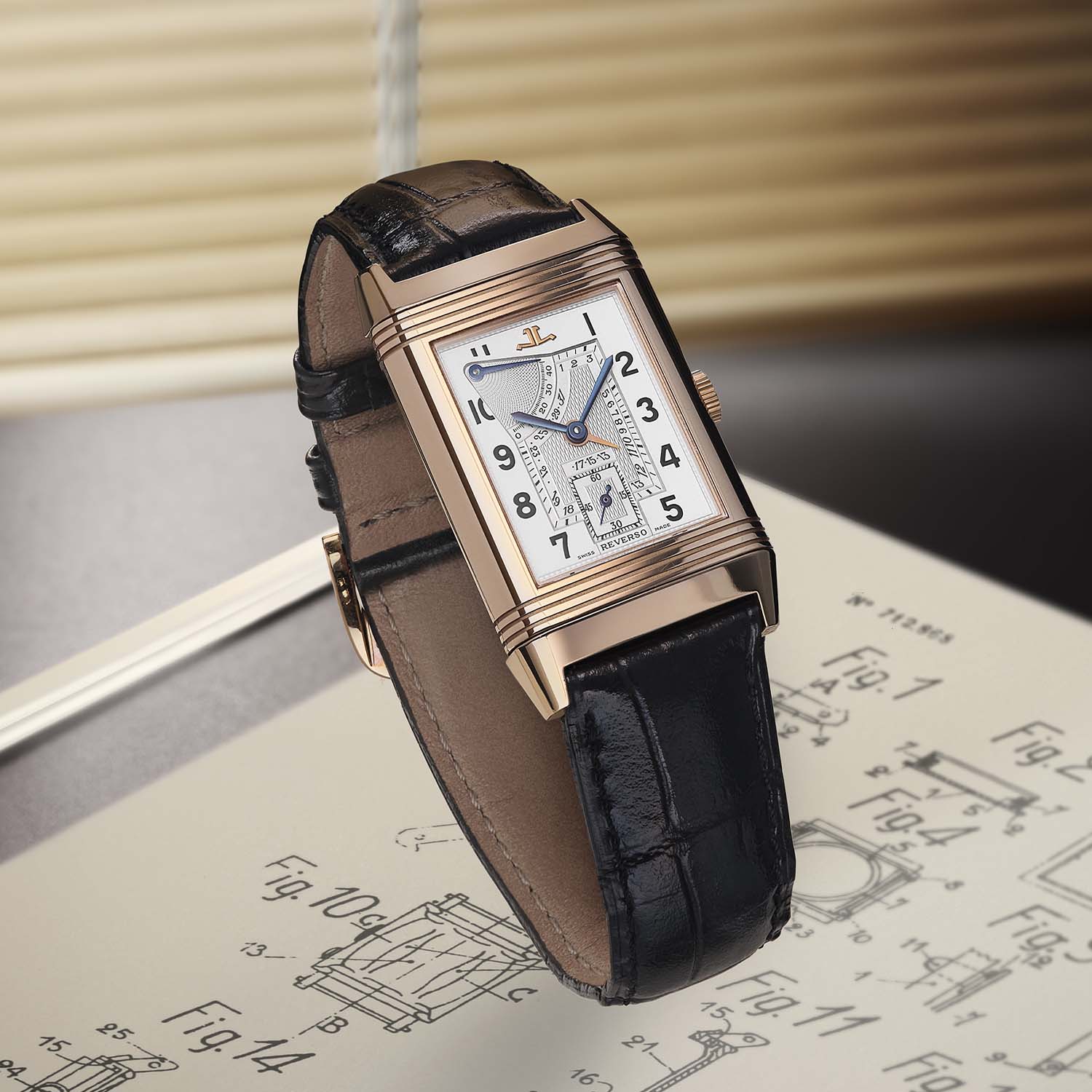
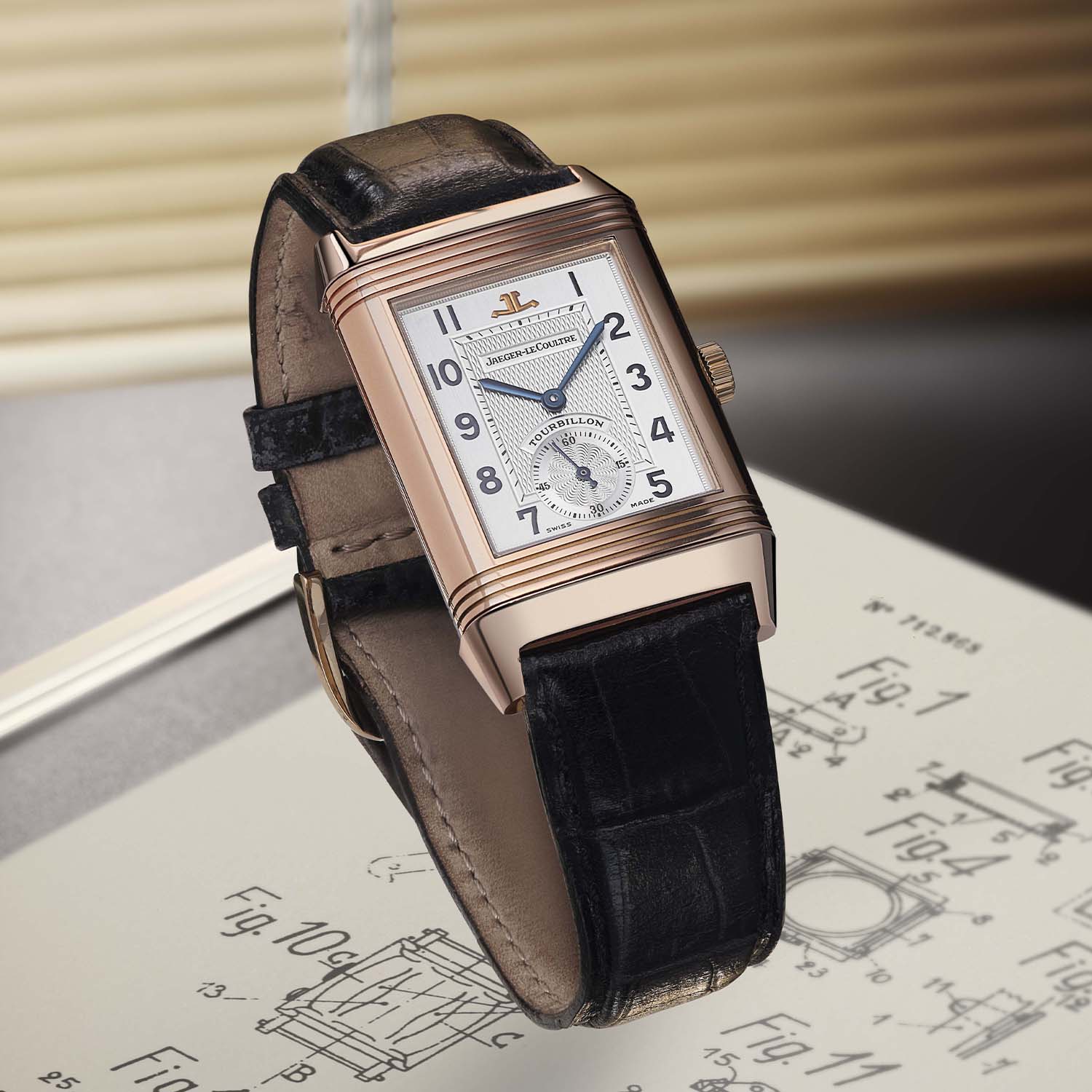
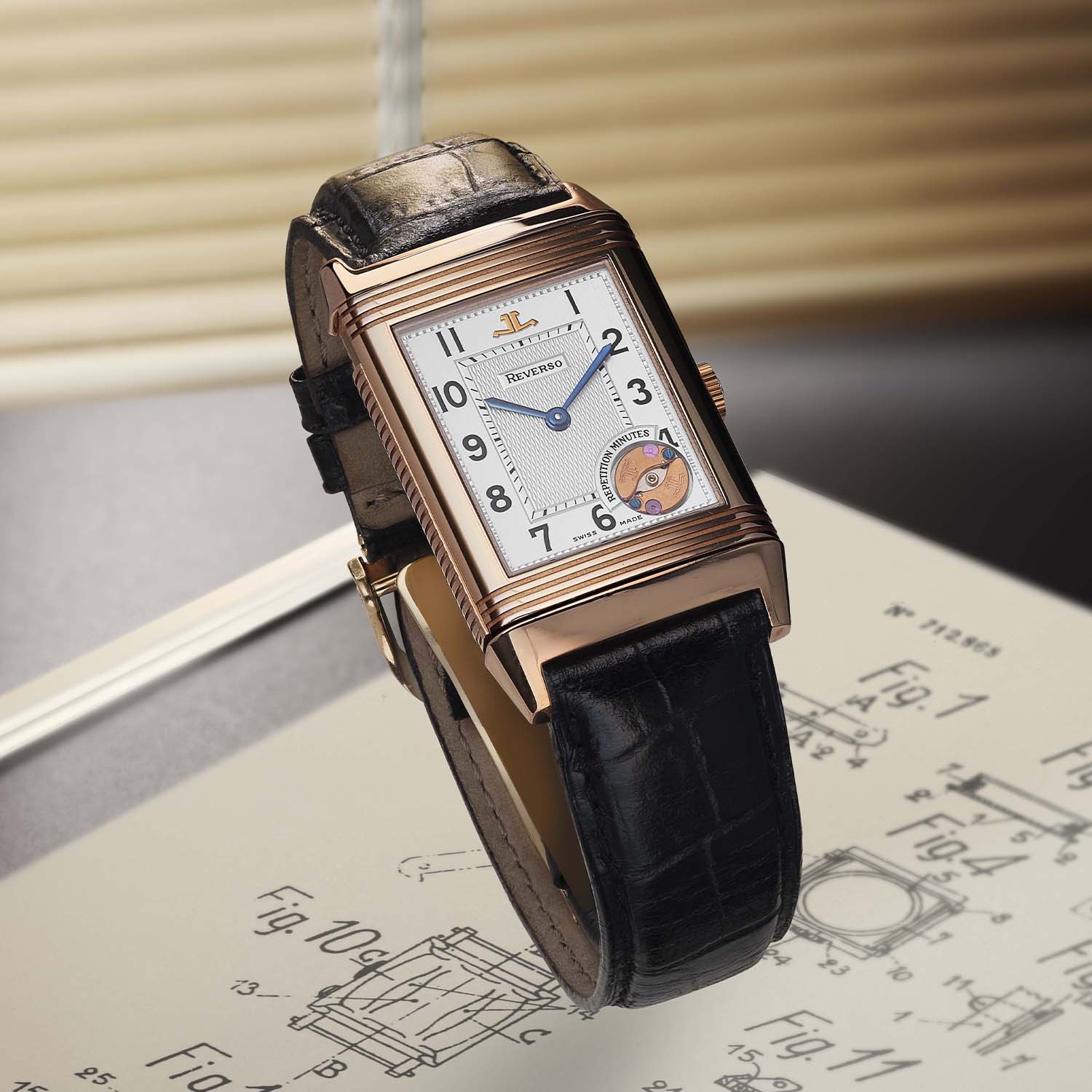
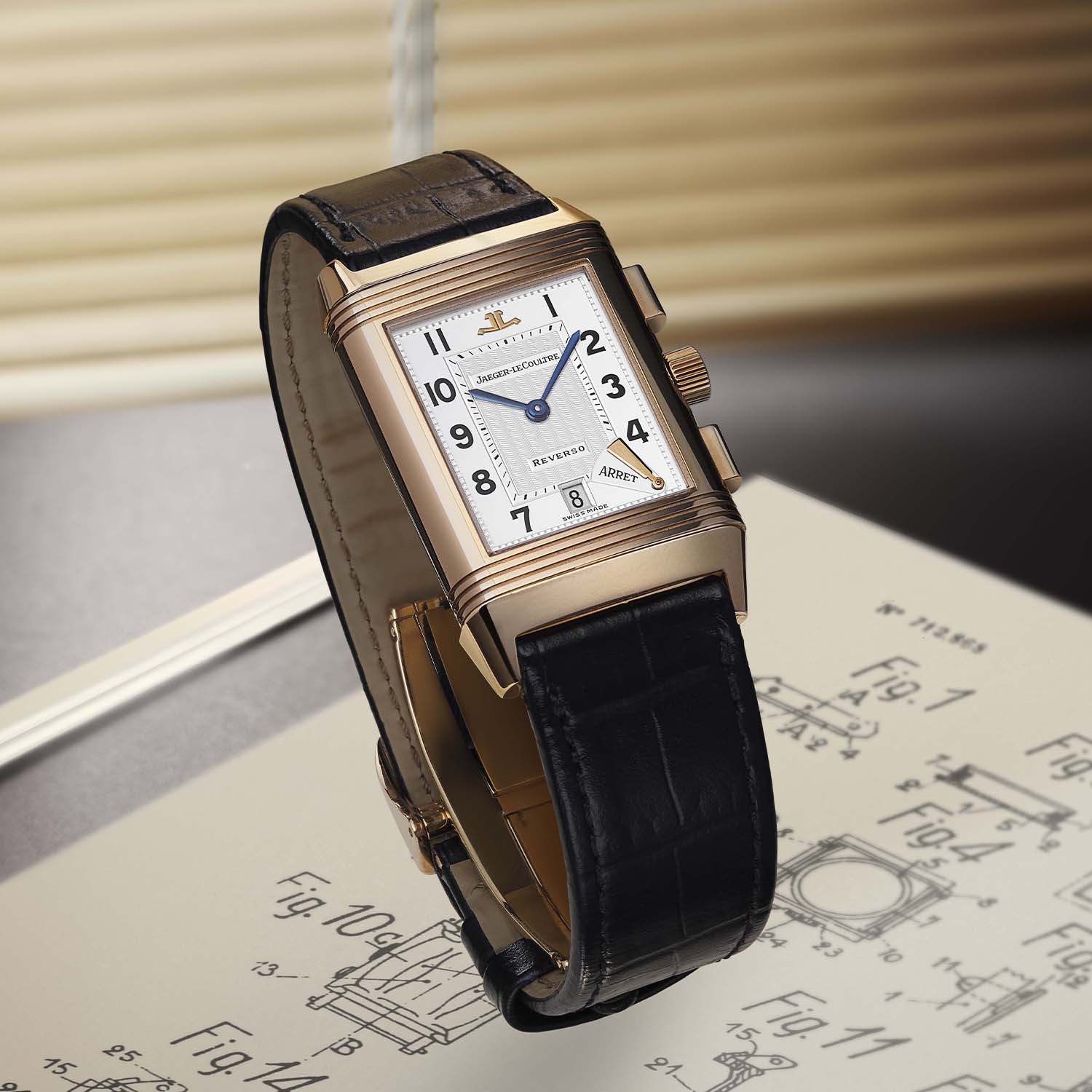
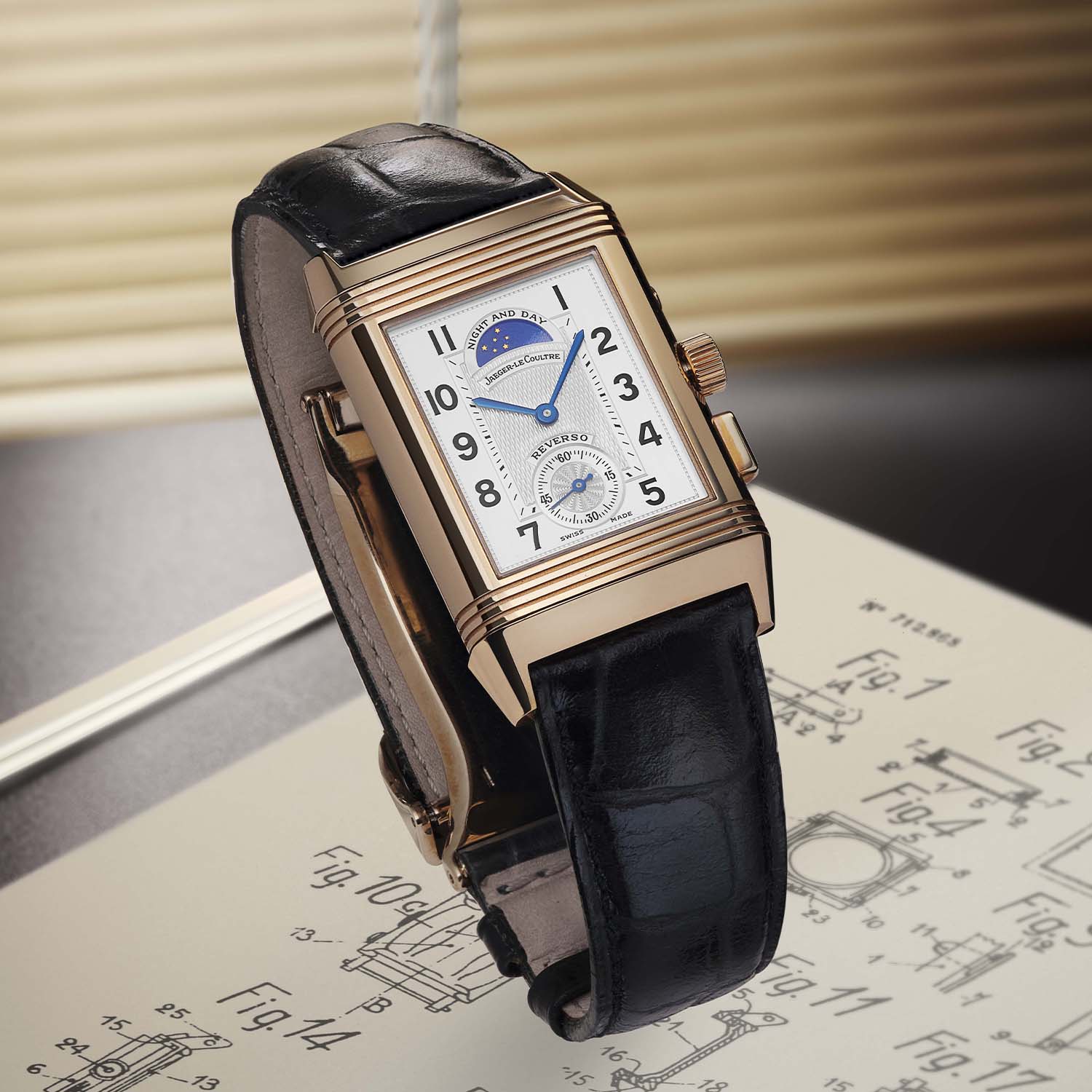
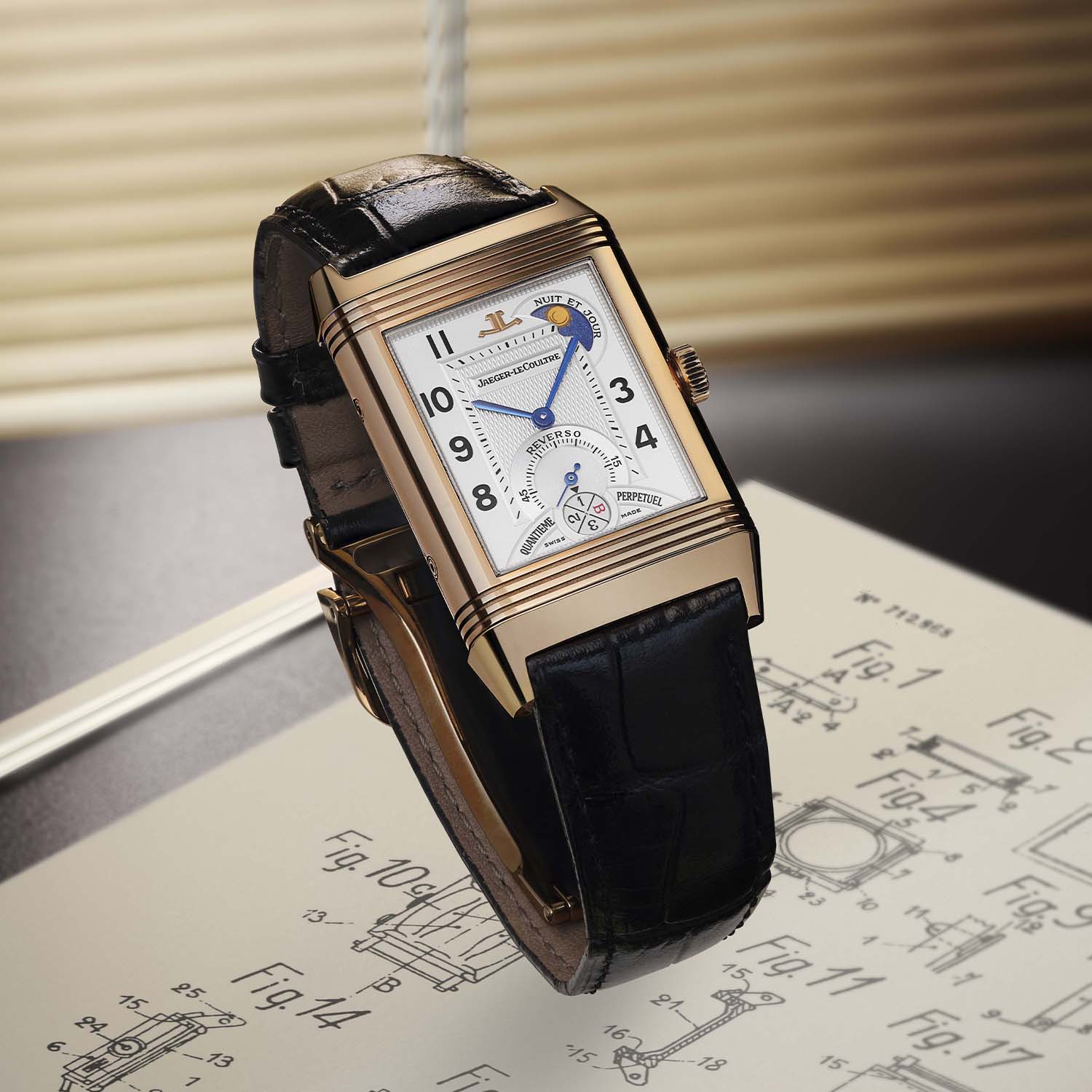

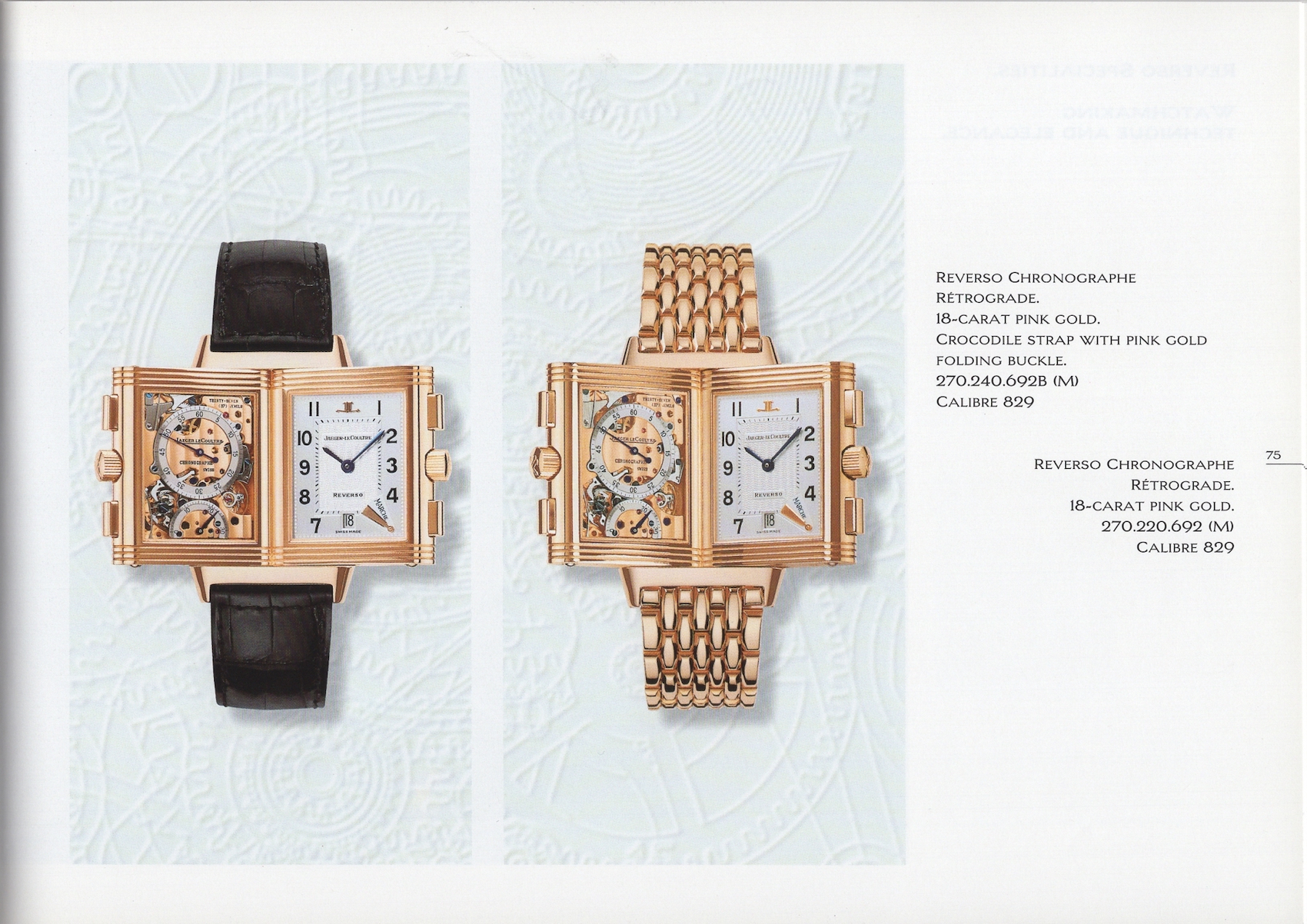
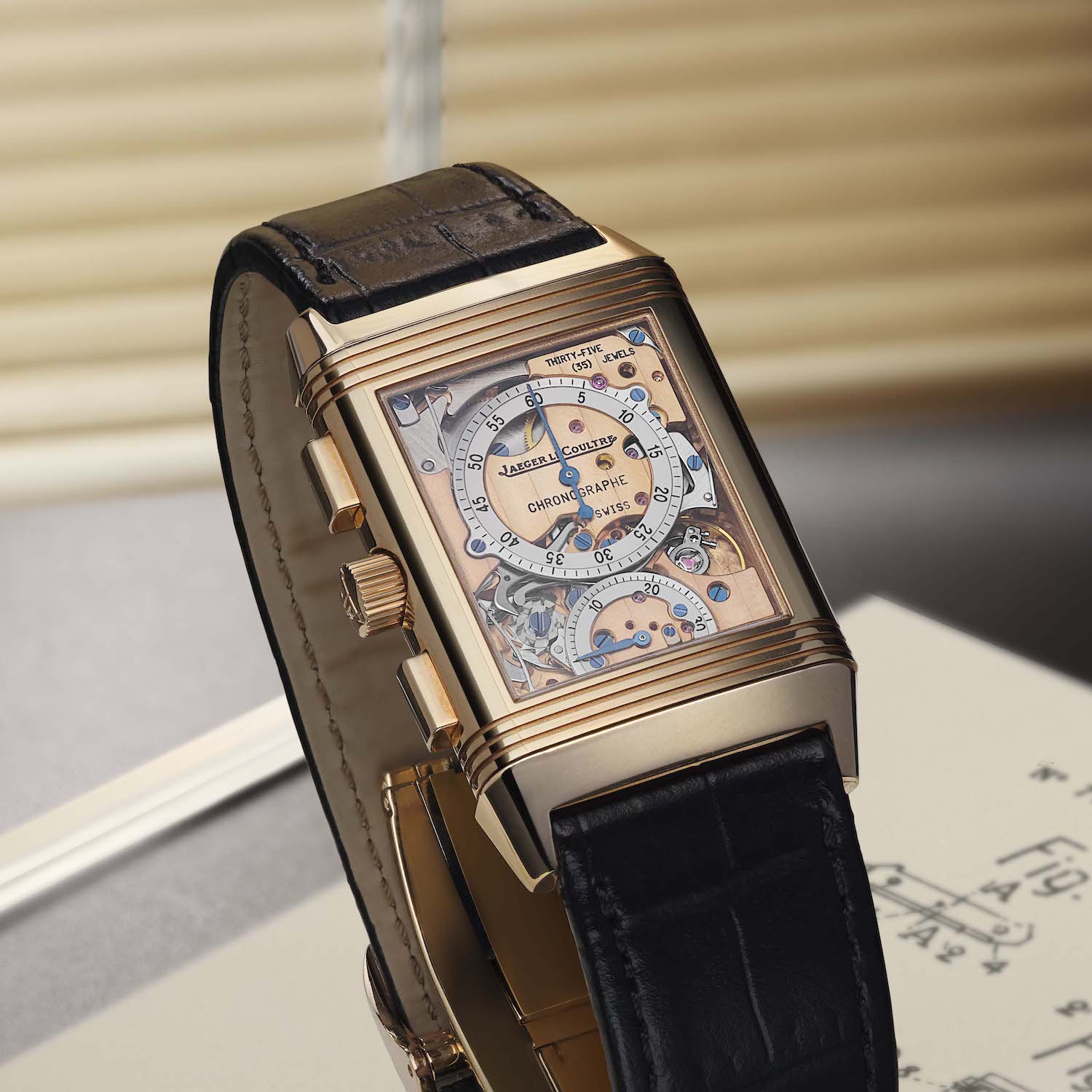

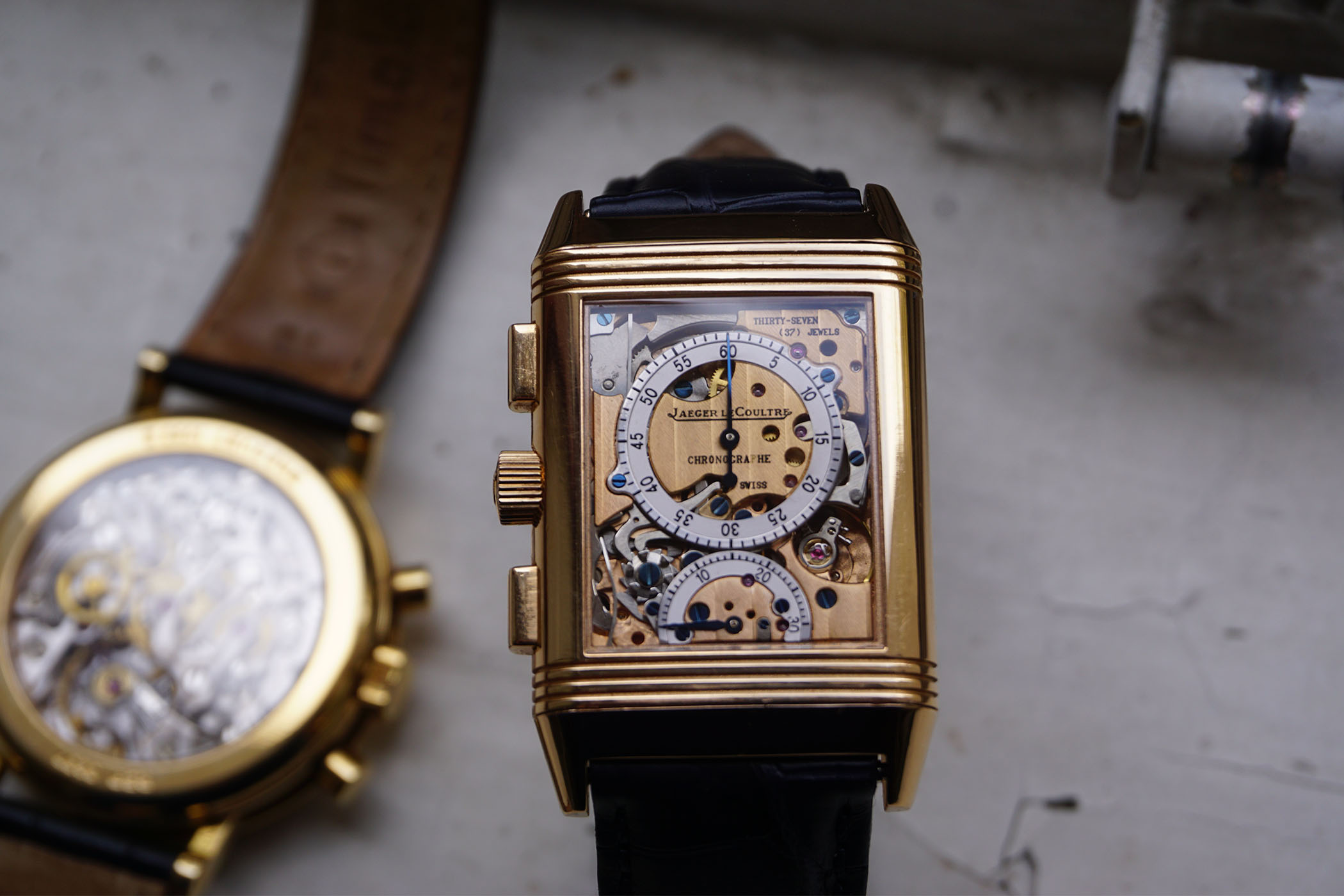
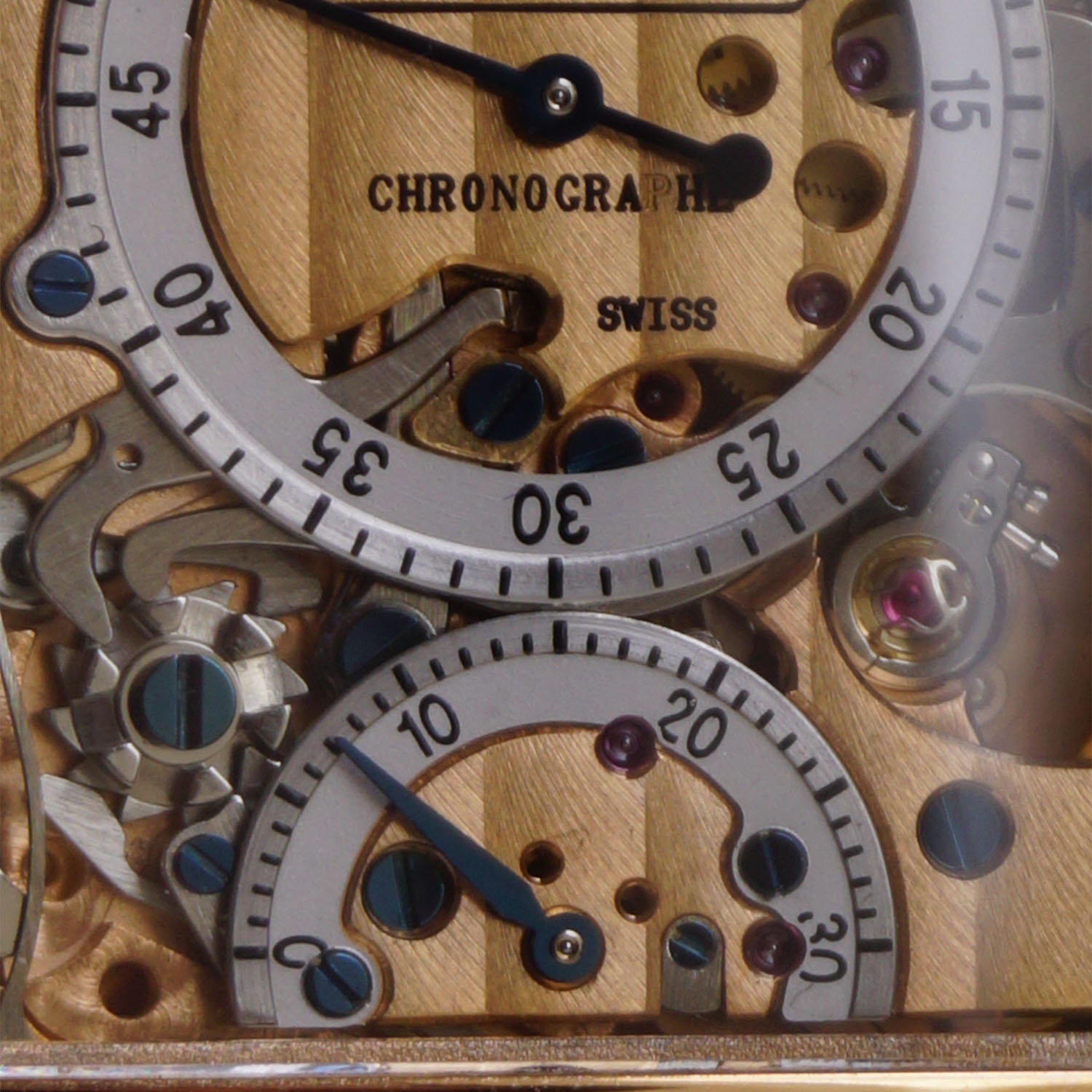
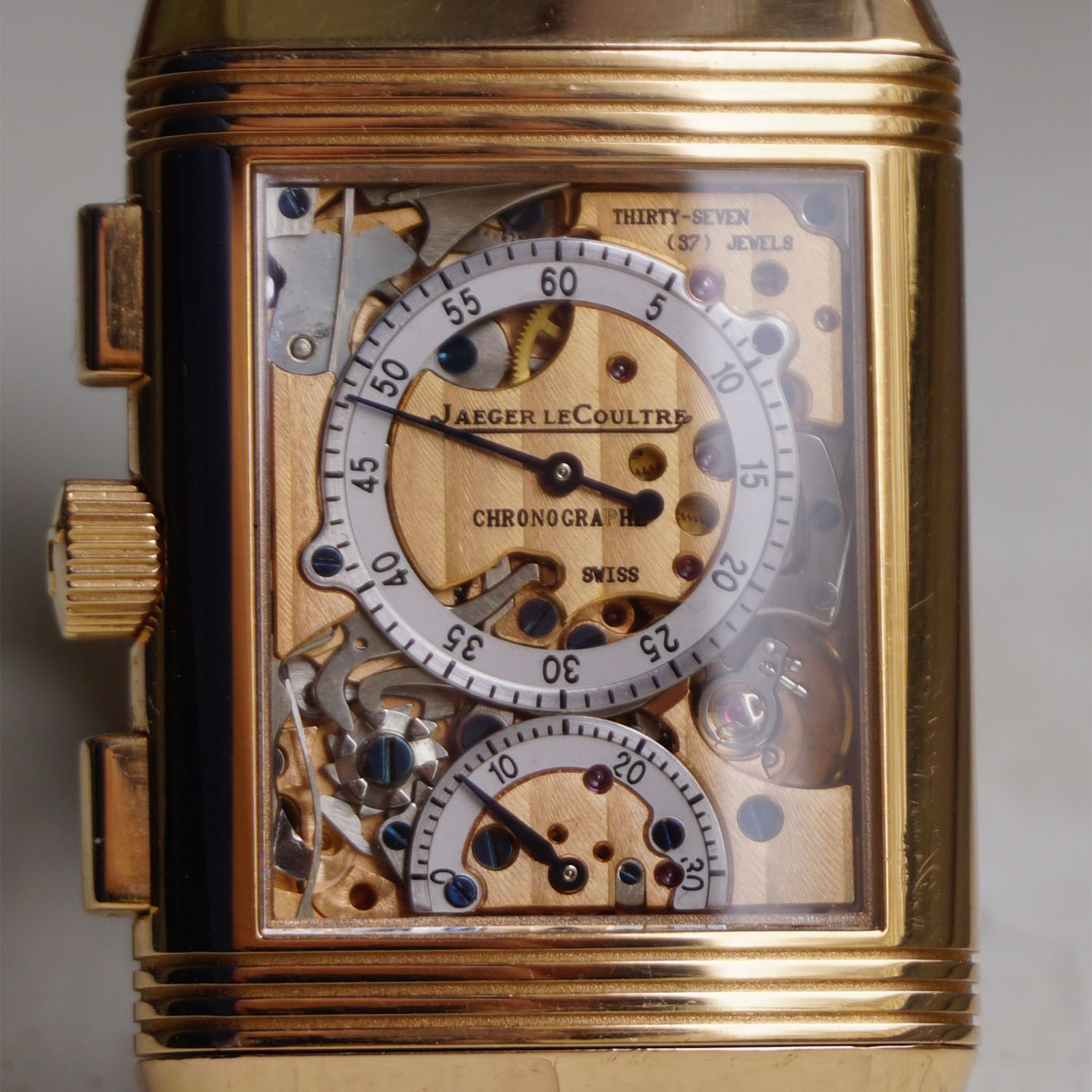
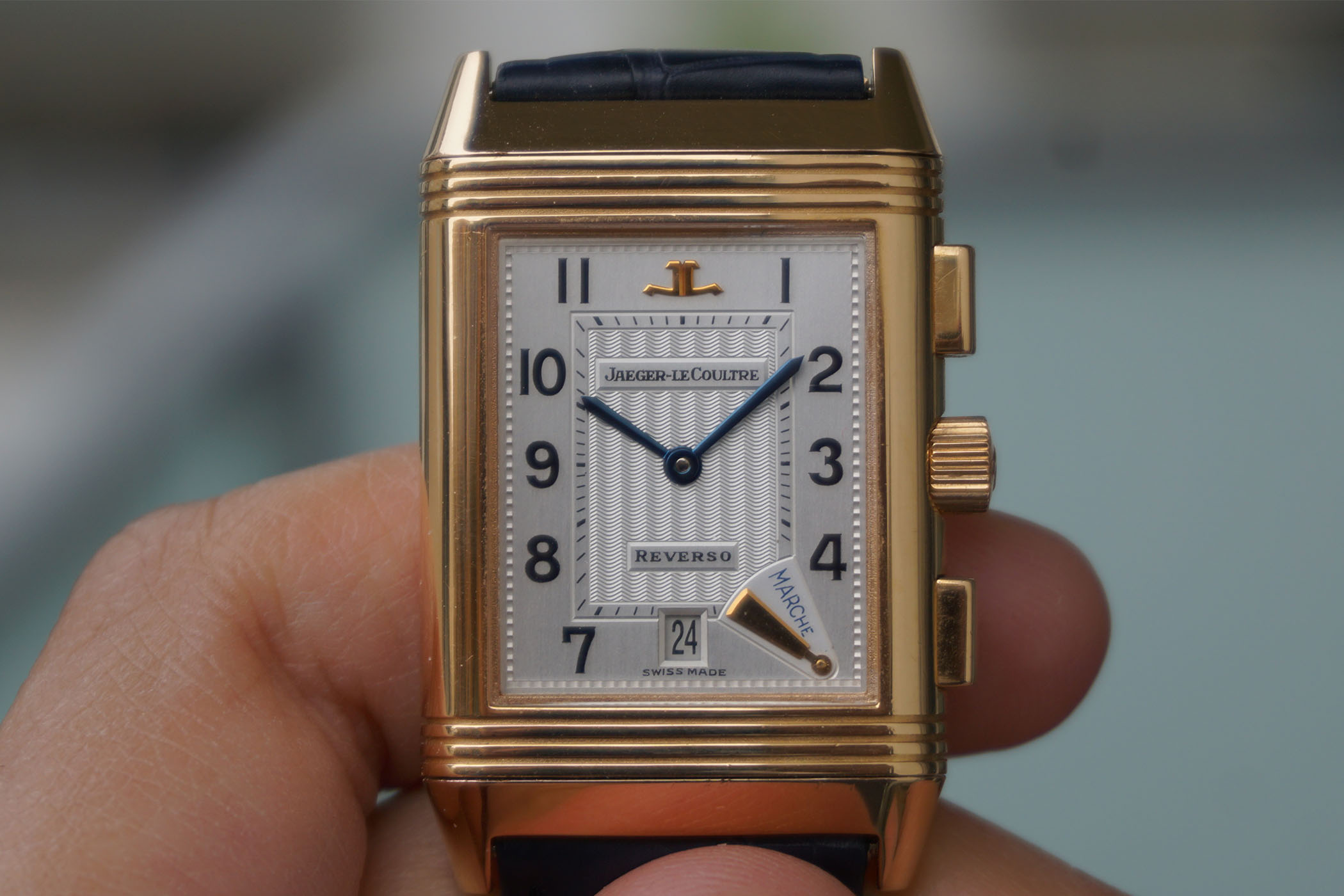



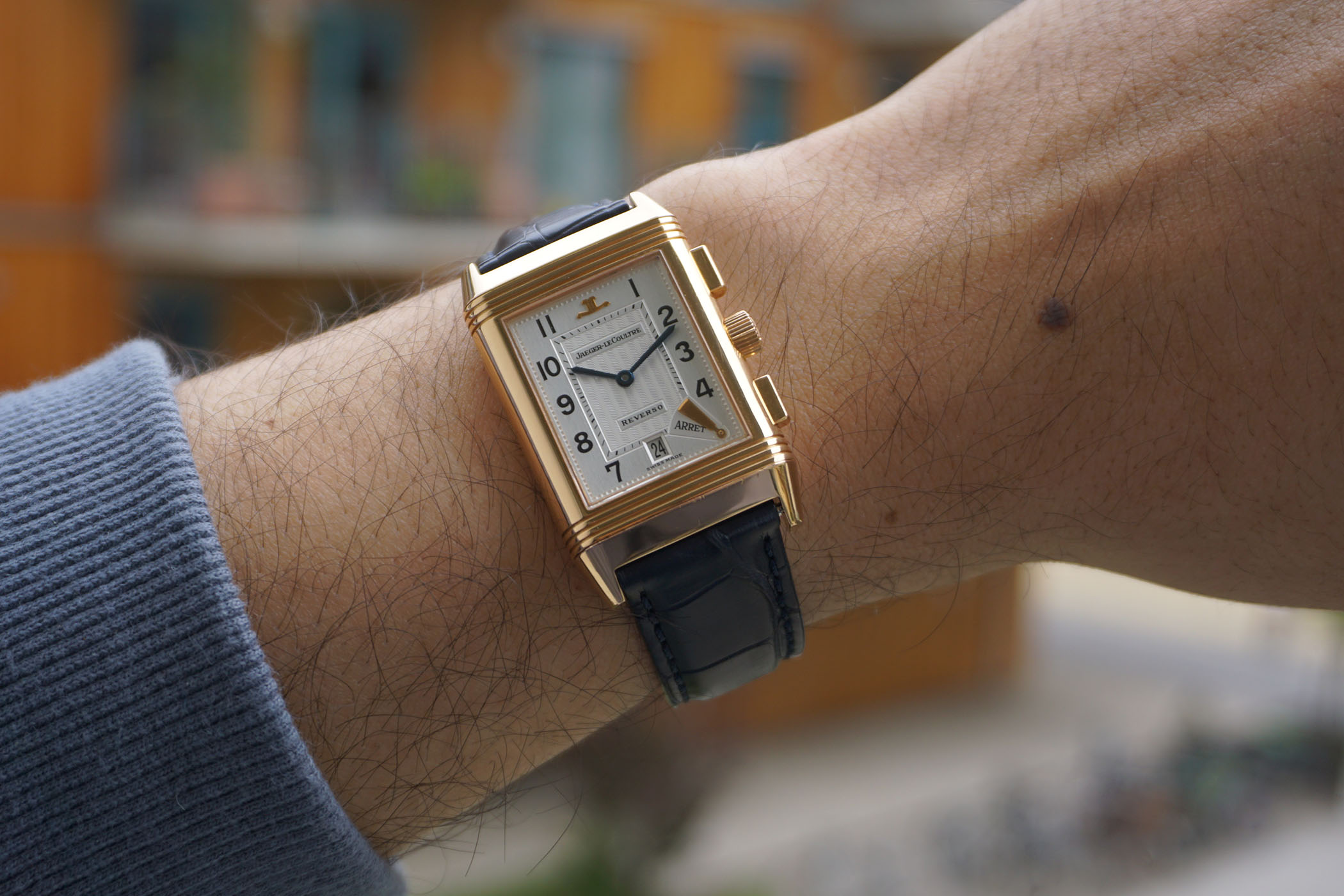

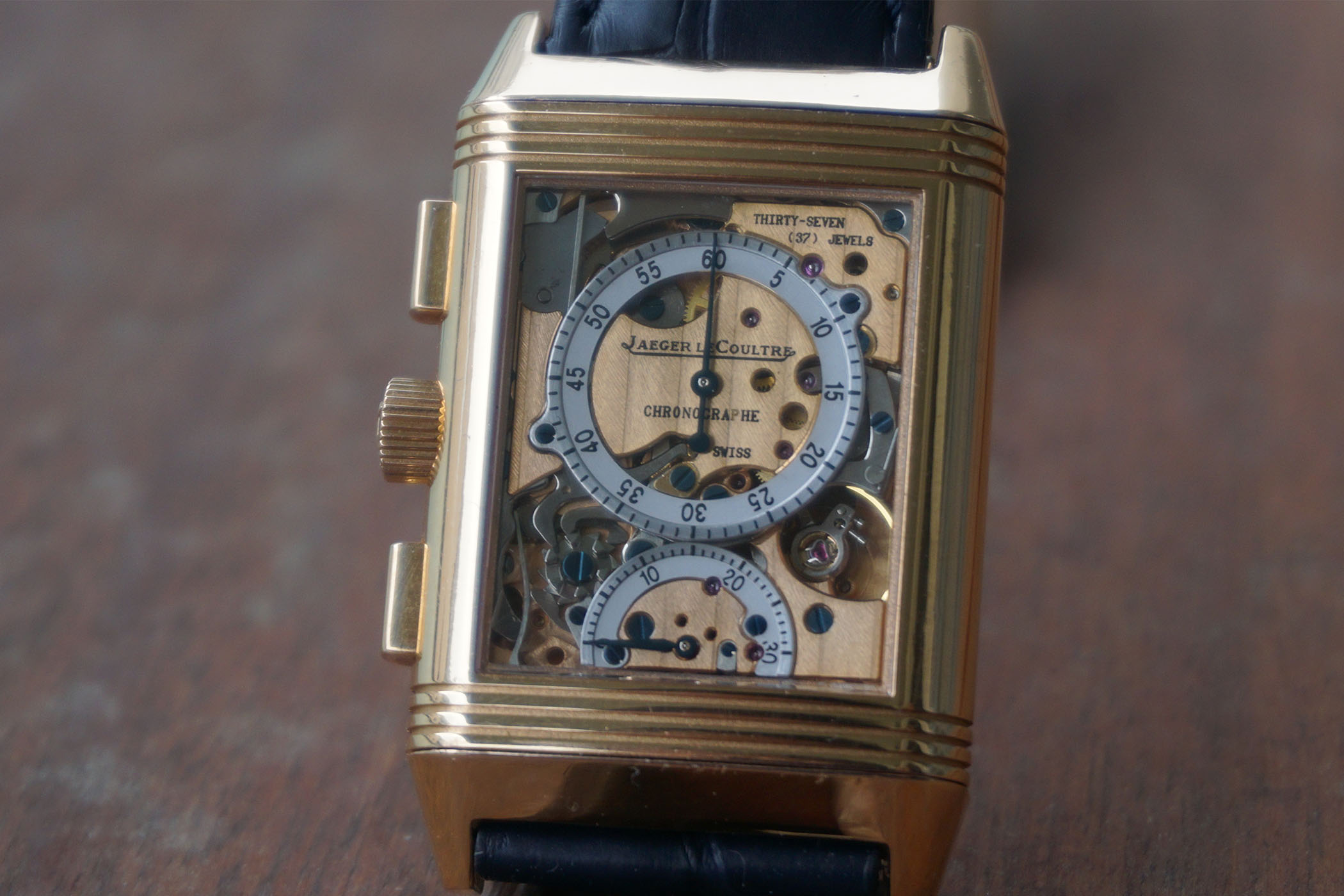
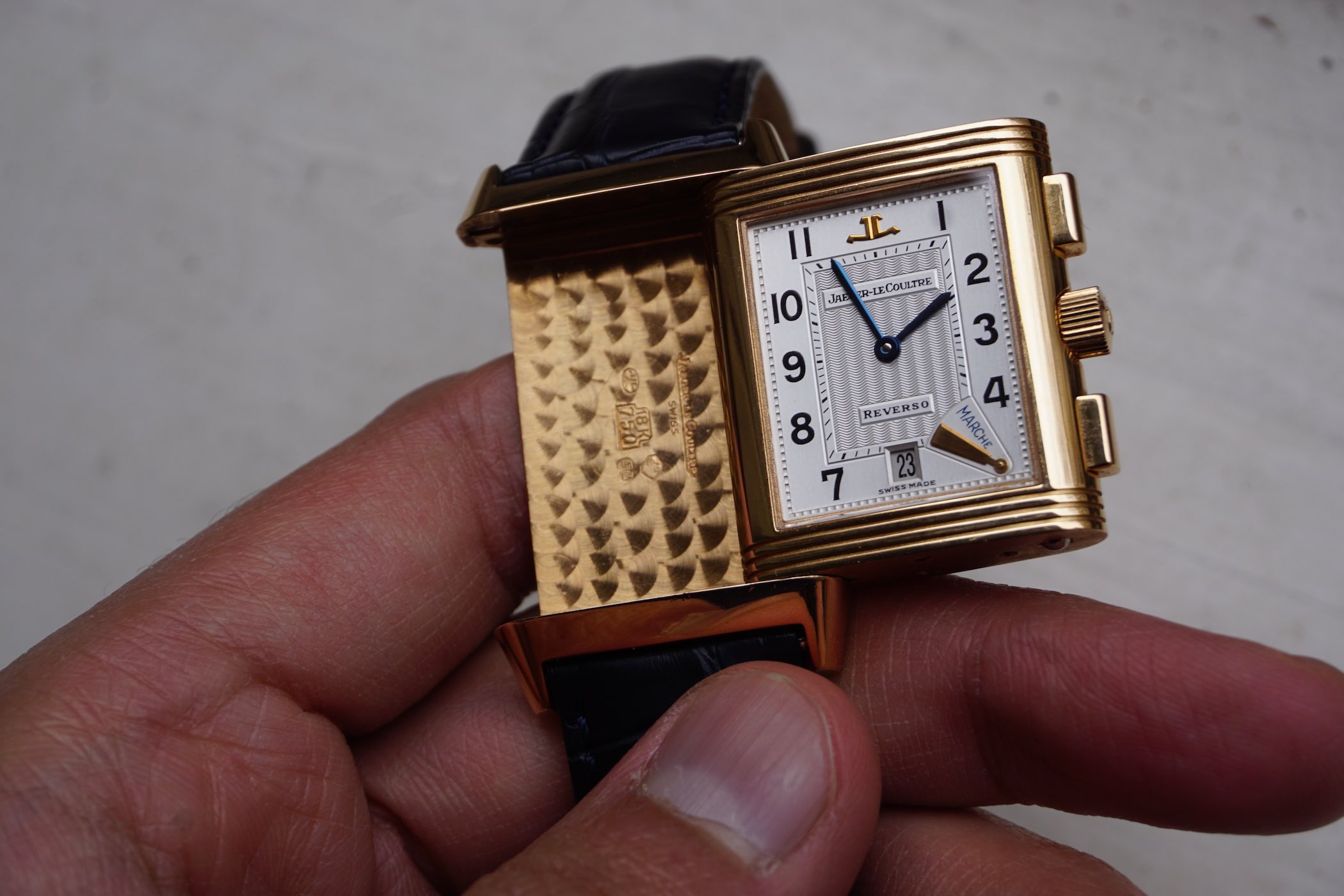



6 responses
I learned something new! Great article.
Brilliant watch, I never tire of reading about it. Remains attainable for many reasons, but it still feels fresh today.
Outstansing
What happened to the movement? There’s a huge blemish near 50 on the back and paint in the P fell off. What a shame!
I personally have found that the fame of JLC is not substantiated in the performance of their movements. Perhaps I was unlucky, but their timekeeping qualities were the worst among the many brands I’ve had. Even a Radiomir with the JLC 8 day movement ran poorly.
Great article on a great watch!
Actually, according to Manfred Fritz and his book “Reverso”, the engineer who worked on caliber 824 was not Daniel Wild but Roger Guignard (who developped the famous caliber 822 as well). Both were involved on the Soixantième project: Wild for the case and Guignard for the caliber.
How beautiful pieces!!! So great! I love Jaeger-Le Coultre…